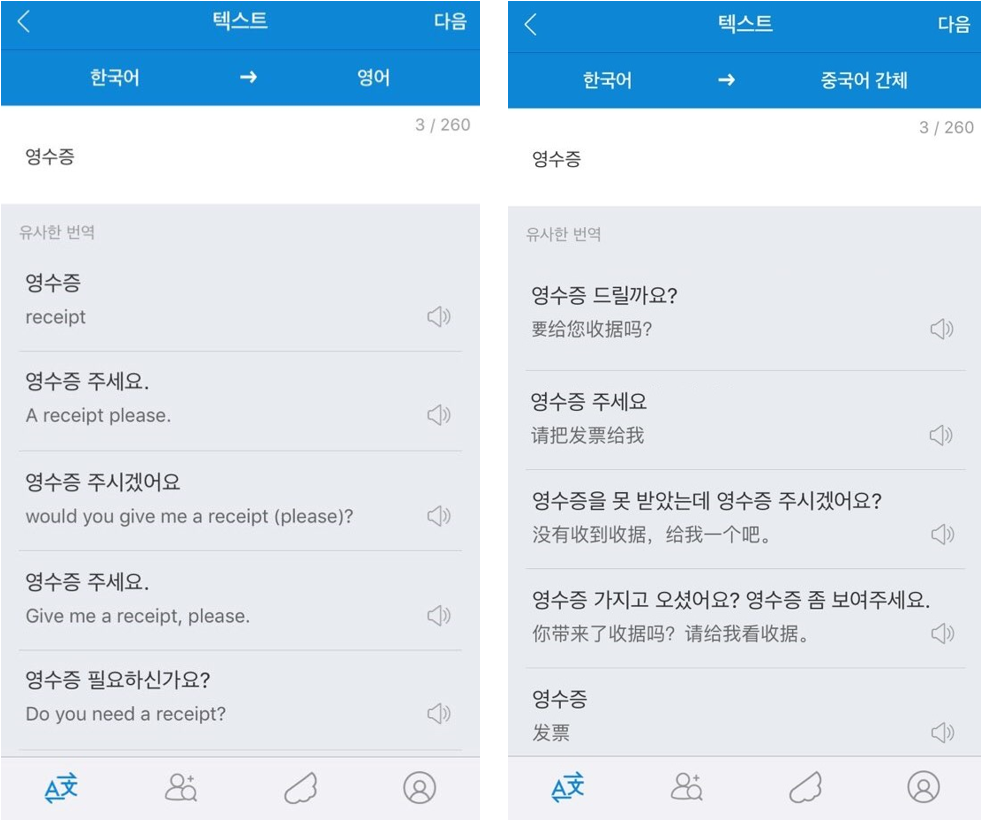Translation platform Flitto now provides users with basic translations and phrases in real-time without having to send a request.
The new feature displays related words and phrases as you type your translation request using data collected from the service over the past five years. It takes away the need of having to wait for a response or pay for translations of common words or phrases.
The function works with the 18 languages that Flitto supports, and results are displayed based on how frequently words and phrases are used. The text-to-voice functionality also generates voice clips, and the company envisions its app will become extremely useful for overseas travelers who have trouble communicating with locals.
Simon Lee, the founder and CEO of Flitto, said, “With this real-time text translation feature, users will be able to enjoy not only the advantages of collective intelligence translation service that provides high-quality, optimum results, but also fast and convenient data-based translation service. The day has come for us to freely communicate and enjoy diverse cultures without language barriers.”

Flitto, which started out as a site that translated tweets from K-pop stars, has become a widely-used professional translation platform that supports text, images, and voice. With 6.5 million users around the world, including 300,000 translators, the company says that an average of 60,000 translation requests are made each day.
With Google’s application of deep-learning technology to its automated translations, and Naver’s app Papago being heavily marketed in Korea, the new feature gives Flitto the bonus of having both automated and human translated content available in one app. Naver, which actually uses data purchased from Flitto to improve its translations, released a service last year that was extremely similar to Flitto – but was eventually pulled after being accused of copying its technology.
Flitto also has plans to expand its professional translation services by launching proofreading and live interpretation in the second half of this year.






